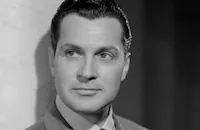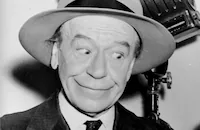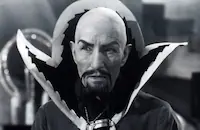Mrs. Wiggs of the Cabbage Patch
Brief Synopsis
Cast & Crew
Norman Taurog
Pauline Lord
W. C. Fields
Zasu Pitts
Evelyn Venable
Kent Taylor
Film Details
Technical Specs

Synopsis
Mrs. Elvira Wiggs has been rearing her children, Jimmy, Billy, Europena, Asia and Australia, alone for three years since her husband Hiram left for the Klondike. The family is destitute, living in the shantytown of Cabbage Patch, and faces a dismal Thanksgiving. After a man leaves his horse for dead, the Wiggs revive it, naming it "Cuby" (after Cuba). Jimmy uses the horse to haul kindling to earn money. To their surprise, Lucy Olcott, a wealthy young benefactress, brings them two baskets of food for Thanksgiving. Lucy shuns her boyfriend, Bob Redding, however, after he shows up late with alcohol on his breath. She is unaware that he was attempting to assist an alcoholic friend back to the hospital, and his friend slipped liquor into his drinking water. Bob takes an interest in the Wiggs family, and takes Billy to a charitable hospital after finding out he has been sick for some time. Bob then buys tickets for the whole Wiggs family to attend the theater. In the meantime, Miss Tabitha Hazy, a spinster and close friend of Mrs. Wiggs, has selected a husband from a brochure with Mrs. Wiggs's assistance. The Wiggs are thrilled with the show, but their joy is interrupted when Mrs. Wiggs is called to Billy's bedside at the hospital. As she tearfully recounts the highlights of the performance, Billy dies. Touched by the tragedy of her situation, Bob advertises in his newspaper to locate Mr. Wiggs and bring him home. Still in mourning, Mrs. Wiggs helps Miss Hazy elicit a proposal from her demanding suitor, C. Ellsworth Stubbins, who promises that if she can make a good mince pie, he will marry her. Mrs. Wiggs exchanges her excellent cooked pie for Miss Hazy's terrible meal. Stubbins and Miss Hazy are married the next day, and their wedding inspires Lucy and Bob to reconcile. When Mr. Bagby, who holds the mortgage on the Wiggs home, demands final payment from Mrs. Wiggs by noon, Jimmy frantically rushes to Bob, hoping to sell his horse to him for the funds. Mr. Wiggs, responding to Bob's advertisement, slips in through the back door of his home just before noon, and Bob slips the final payment into his pocket. The Wiggs home is saved and their family reunited.

Director

Norman Taurog
Cast
Pauline Lord

W. C. Fields

Zasu Pitts

Evelyn Venable

Kent Taylor

Donald Meek
Jimmy Butler
George Breakston

Virginia Weidler
Carmencita Johnson
Edith Fellows

Charles Middleton
George Reed
Mildred Gover

Arthur Housman

Walter Walker
Sam Flint
James Robinson
Bentley Hewlett
Edward Tamblyn
Al Shaw
Sam Lee
Del Henderson
George Pearce
Lillian Elliott
Earl Pingree
Dorothy Ross
Daisy Rooney
Gladys Young
Crew
Edgar Anderson
Hugh Bennett
Eddie Croninworth
Hans Dreier
Charles Lang
Douglas Maclean
William Slavens Mcnutt
Eugene Merritt
Robert Odell
Robert Pittack
Leroy Prinz
Clifford Shirpser
Jane Storm
Adolph Zukor

Film Details
Technical Specs

Articles
Mrs. Wiggs of the Cabbage Patch
The two sound versions of Mrs. Wiggs of the Cabbage Patch were made at Paramount. When the 1934 version was in production, Fields was toiling on the lot on his own film, It's a Gift (also 1934). Norman Taurog, who had directed Fields in If I Had a Million (1932) persuaded the comic to take a break from his starring vehicle and take on the role of Mr. Stubbins in Mrs. Wiggs of the Cabbage Patch, even though the character appears in only the final 20 minutes of the movie. Pitts plays Miss Hazy, a friend who has been accepted as a member of the family by Mrs. Wiggs, who is determined to find the younger woman a husband. Enter Fields as Stubbins, a likely candidate if only he can be fooled into thinking that Miss Hazy is an expert cook. The passionate wooing of Fields and Pitts, complicated by her lack of culinary skills, provides the movie's comic highlight.
A week before production began on Mrs. Wiggs of the Cabbage Patch, Fields tore the ligaments and tendons in an ankle. Abandoning crutches only when the cameras rolled, he played his part in considerable pain. After one scene he apologized to his friend Taurog for forgetting his lines, explaining that, "this bad leg bothers me so much." Taurog's retort: "That's all right, Bill, but this is the first time I've ever heard of anybody talking with his feet!"
Producer: Douglas MacLean
Director: Norman Taurog
Screenplay: William Slavens McNutt, Jane Storm, from novel by Alice Hegan Rice and play by Anne Crawford Flexner
Art Direction: Hans Dreier, Robert Odell
Cinematography: Charles Lang
Original Music: Val Burton, John Leipold, Ralph Rainger (all uncredited)
Cast: Pauline Lord (Mrs. Wiggs), W.C. Fields (Mr. Stubbins), Zasu Pitts (Miss Hazy), Evelyn Venable (Lucy Olcott), Kent Taylor (Bob Redding), Charles Middleton (Bagby), Donald Meek (Mr. Wiggs).
BW-80m.
by Roger Fristoe

Mrs. Wiggs of the Cabbage Patch
Quotes
Trivia
Notes
According to a 1931 news item in Film Daily, Agnes Christine Johnston was signed to write dialogue and character material for a production of Mrs. Wiggs and the Cabbage Patch, however, no later news items or reviews mention her and the extent of her contribution to the film produced in 1934 has not been determined. Film Daily also noted in 1931 that Junior Durkin and Charlotte Henry were initially slated to appear in the film. This film marks Pauline Lord's screen debut. The "Glow Worm Ballet," which was performed in the vaudeville theatre scene, was staged by LeRoy Prinz. A photograph of Fields as a young man that was used in the film was, according to the pressbook, "an art study made of himself in Cape Town, South Africa, where he was a tramp juggler." Press reports also note that the shantytown was built in Calabasas, and a news item in Daily Variety notes that some scenes were filmed at Lasky Mesa, CA. The following songs were heard in part in the film: "The Glow-Worm," English words by Lilla Cayley Robinson, German words and music by Paul Lincke; "Wait 'Til the Sun Shines, Nellie," words by Andrew B. Sterling, music by Harry Von Tilzer; "Listen to the Mockingbird," words and music by Alice Hawthorne; "Old Folks at Home," words and music by Stephen Foster; and traditional Scottish ballad "Comin' Thro' the Rye," words by Robert Burns. Actress Mary McLaren was identified in a production still from the film, but her appearance in the released film has not been determined. According to a modern source, Fields seriously injured his ankle prior to production, and was in pain during filming. Modern sources add Tyler Brooke (Ticket taker) and Ann Sheridan to the cast. Other films produced by Paramount based on Rice and Flexner's play and titled Mrs. Wiggs of the Cabbage Patch, are the 1919 production, directed by Hugh Ford and starring Marguerite Clark and Mary Carr (see AFI Catalog of Feature Films, 1911-20; F1.3007), and the 1942 production, directed by Ralph Murphy and starring Fay Bainter and Hugh Herbert.














